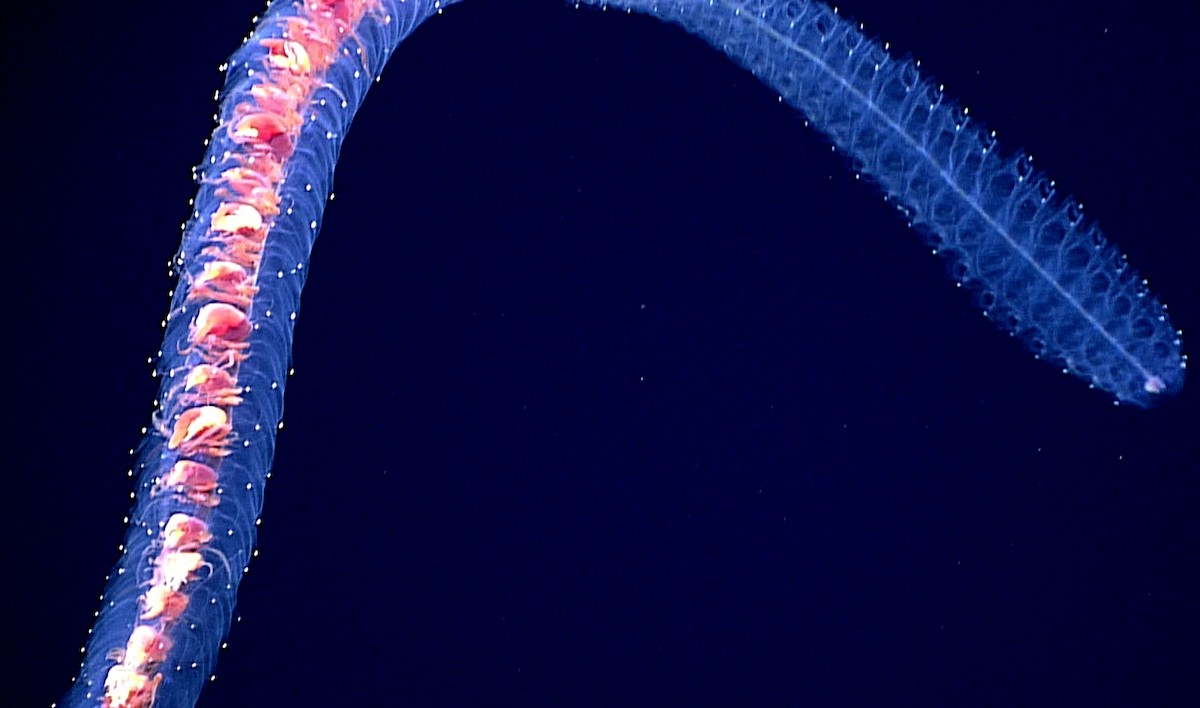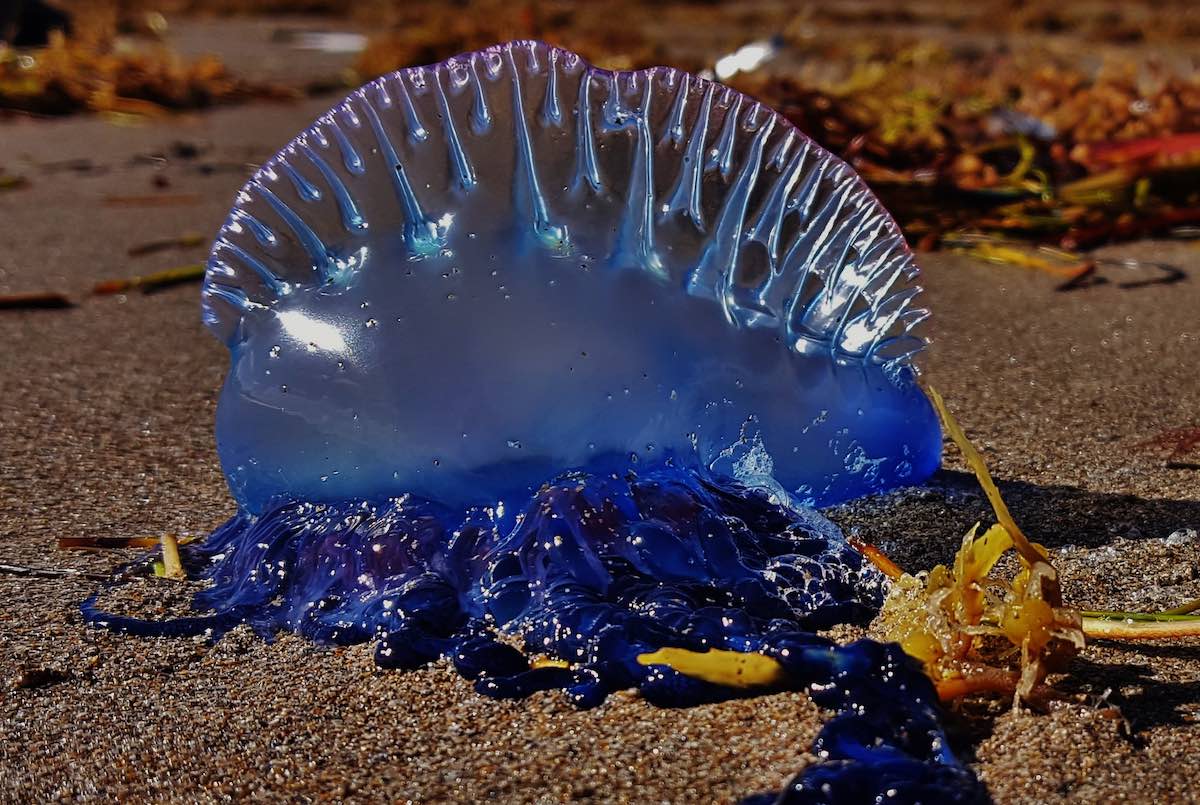Siphonophores Could Be the Longest Animals in the World
Learn more about siphonophores, weird and wonderful marine invertebrates

Last month, researchers discovered a new species that might be the longest animal in the world: a 150-foot siphonophore.
If you are thinking, “a what?”, you’re not alone! Siphonophores (si·pho·no·phores) might not be the most popular critters in the sea, but these long invertebrates are incredibly cool. Here at Ocean Conservancy, we love sharing some of the ocean’s weird and wild invertebrates, so read on to learn more about these gelatinous, spineless wonders.
The name “siphonophore” represents about 175 species in the order Siphonophorae. They are part of the phylum Cnidaria, which includes well-known ocean animals like jellyfish, anemones and corals. Many siphonophores are long and string-like, but some, like the venomous Portuguese Man O’War, resemble jellyfish.

Although they might look like one organism, siphonophores are actually colonial, meaning they consist of thousands of clones functioning in different ways. One siphonophore starts with a single zooid or “bud”, which replicates itself asexually (meaning they don’t need a partner to reproduce). As the colony grows, different zooids take on different functions to help the colony eat, move and reproduce. For example, in the Man O’ War, parts include the pneumatophore, which is filled with gas and floats on the ocean surface; the gonozooids and gastrozooids, used for reproduction and digestion; and the dactylozooids, used for hunting and capturing prey. Individuals zooids rely on each other to survive, and together they make one large, functioning colony.
Although they might not look intimidating, siphonophores are voracious carnivores. Their gastrozooids, or specialized feeding zooids, often have tentacles packed with nematocysts. Nematocysts are stinging cells that are used to stun and capture prey (or you, if you’re unlucky). Most use a “sit and wait” technique where they drift along and wait to run into small fish and copepods. Others use their bioluminescence to trick prey into coming too close.

Even if they don’t use it to lure food, most siphonophores are bioluminescent. Bioluminescence is a chemical process in which an organism emits light. Some species glow green or blue, but one species of siphonophore is the first marine invertebrate shown to glow red.
So do you want to see one for yourself? You might be out of luck, as most large siphonophores live in very deep waters. Fortunately, you can follow along with deep-sea expeditions like through the Schmidt Ocean Institute or the E/V Nautilus and hope to spot one on camera. And in the meantime, you can read more about these wild invertebrates here.